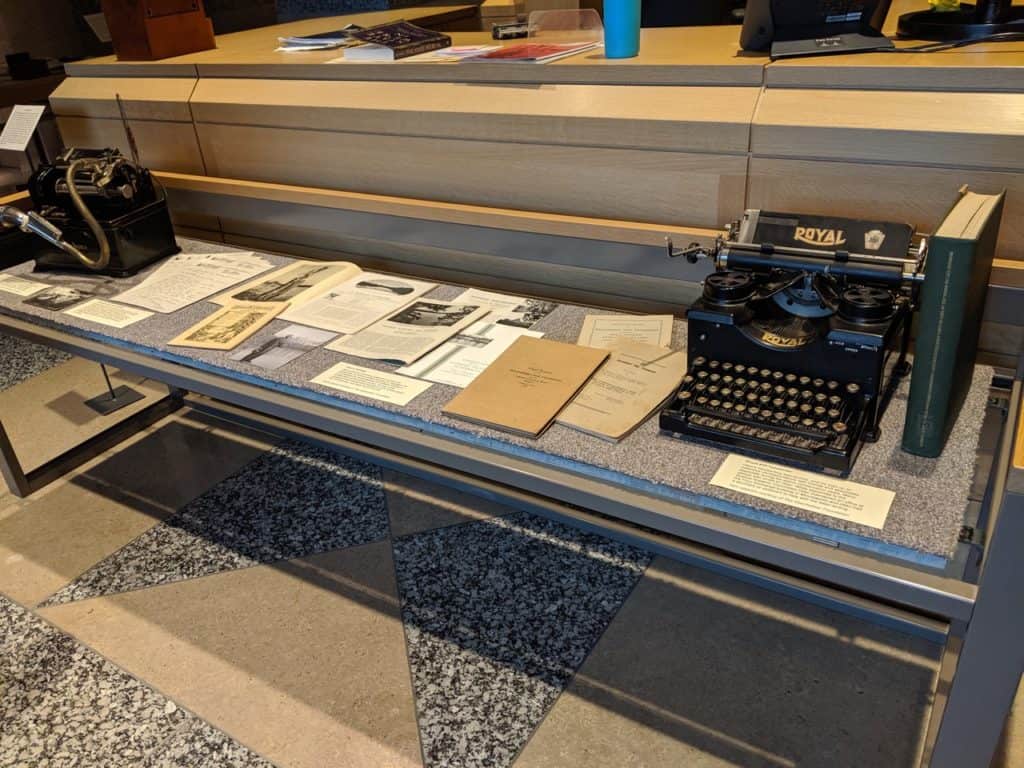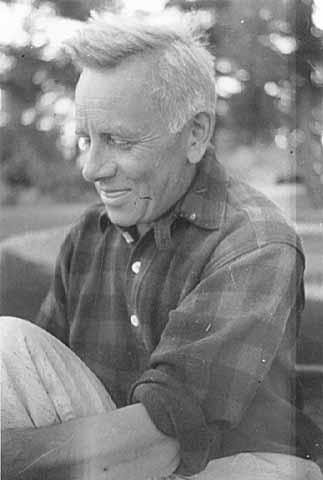

The Minnesota History Center in St. Paul is now showing a special exhibit of objects related to Quetico-Superior conservationist Ernest Oberholtzer. The exhibit is the result of a partnership between the Oberholtzer Foundation and the Minnesota Historical Society.
Oberholtzer was born in 1884 and died in 1977, and in his life became one of the first figures in the fights to protect the lakes, rivers, and forests on the Minnesota-Ontario border. Beginning in 1909 and continuing for decades, he explored the region by canoe, and his adventures extended to the Arctic.
In 1913 Oberholtzer moved to Rainy Lake, and in 1922 bought Mallard Island, where he lived for the next 50 years. By 1925, he was fighting a proposal to dam the Rainy River — potentially raising water levels on Rainy Lake and farther upstream — a cause he supported for the rest of his life.
The History Center exhibit features Oberholtzer’s papers and other materials kept by the Historical Society, as well as items that were brought from Mallard Island. It includes displays about his work, books and photography, camping, and his epic canoe journey with Billy Magee in 1912, which took them to Hudson Bay.
Paula DeMars, working with the Oberholtzer Foundation as a contract archivist, and Jennifer Huebscher, the Minnesota Historical Society’s curator of photography and moving images, are largely responsible for the exhibit.
“I am excited as I peruse the display cases because there are more authentic Oberholtzer items in one place than ever before, in my experience,” says Oberhotlzer Foundation executive director Beth Waterhouse. “You will see his Royal typewriter— an item that traveled all over with him and was crucial to his connection to colleagues in decades of wilderness preservation work. You will see the original maps created by Ober the year after the 1912 epic canoe journey to Hudson Bay; you will see a hand-selected variety of his books, and you will see a good representation of his photographs.”
Oberholtzer helped form the Quetico-Superior Council in 1928, serving as its first president. The organization sought to preserve the wilderness character of the whole region by designating the nascent Quetico Provincial Park and Superior National Forest, and other parts of the Rainy Lake watershed, as an international park.
In the 1930s, he served as chairman of President Franklin D. Roosevelt’s Quetico-Superior Committee, and was one of the founders of the Wilderness Society in 1937. Oberholtzer himself had a relationship with the Historical Society during his lifetime. He recorded several oral interviews for the organization before his death.
The exhibit is free and open to the public now through late November. It is located in the foyer to the Gale Family Library on the second floor of the Minnesota History Center. There will be a reception featuring the exhibit on Saturday, October 26 from 2 to 4:30 p.m.
More information:

